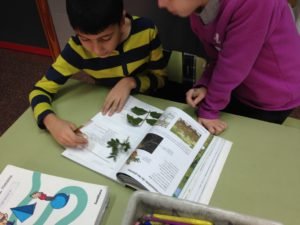Some children feel passion for nature and want to know closely the characteristics of plants, for this type of case, it is important to use creativity for the realization of a Herbarium in the classroom.


To start with this project in classes, it is important to make the children aware of the conservation of the environment, so that they do not pick up the flowers or damage the leaves of the plants, to achieve the objectives of this activity is to guide the children who must collect the leaves and flowers of the field or gardens that have fallen to the ground.
Also, if you want, you can buy the flowers at a florist, but for children, it is interesting to find these copies and let their imagination fly because they play the role of explorers.
Objectives of the Herbarium.
• Educate children about the value of nature.
• Expand knowledge about the diversity of plants (local, regional, national and international).
• Promote the conservation of plants and the environment.
• Know and conserve plants in danger of extinction.
• Awaken the child's curiosity and imagination.
Collection techniques
For the realization of a herbarium, it is essential to establish the type of plant that is required to collect, for example, if the herbarium will be medicinal plants, only those that are integrated with that category will be collected.
To make a collection, a series of materials is necessary to facilitate fieldwork.

- Old newspaper sheets.
- Plastic bags.
- Scissors.
- Note notebook.
- Pencil.
- Corrugated cardboard or school card.
- Paste.
- Stapler.

• Put the newspapers between the pages of a giant and heavy book, if you do not have that giant book, you can also place the newspapers on a smooth and wide surface, placing heavy objects on top of them. The importance of the technique of pressing will make the copies have a good quality assembly. Remember that when pressing, you have to respect the direction of the stem, leaves, flowers or fruits.
• Five or six days later, open the newspapers. The flowers and leaves should be dry and ready for assembly.
• Classify the flowers and leaves, to proceed to paste them on the school card, respecting a space for the description of the copy. You can classify the flowers by the shape of the petals and the leaves by the shape of the edges or by the texture of the surface.
• Write the name of the plant to which each flower or each leaf belongs.

• Place a label with all the possible field data, since it will allow a good identification. The file must have the following information: Name of the school, collection number, date of collection, location, municipality, scientific name, family, common name, land, use, and description of the plant.
• Finally, staple the cards to form the album or if you want to bake it with a string on a side edge, the important thing is to keep all the samples already stuck well.

The good maintenance of the herbarium will allow the leaves or flowers to last and be kept for a long time, for this, it is necessary to store them in a place far from humidity, to avoid fungi, moths or the attack of insects.
With the realization of the herbarium, children are encouraged to take care of the forest resources available in our region, making them see how transcendental this resource is because they constitute one of the most important riches in the country where they belong.
With this type of project in the classroom, you get to have a partial knowledge of the great diversity of nature, since it is possible to observe only a part of the plant, with its leaves, flowers, and fruits. However, with this activity, children begin to become familiar with the complexity of shapes, colors, and textures of plants, as well as the differences between each species.
Posted from my blog with SteemPress : http://lmrey.vornix.blog/2018/10/11/know-the-diversity-of-plants-and-flowers-with-herbarium-in-classrooms/


